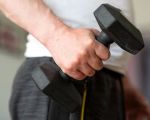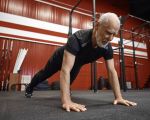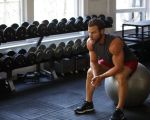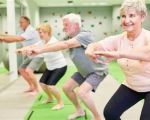- what-is-core-stability - understanding-the-true-meaning-of-core-stability
- why-core-stability-matters - benefits-of-core-strength-for-everyday-life
- gym-workouts-for-core-stability - top-effective-gym-exercises-for-a-stable-core
- real-life-case-study - how-core-workouts-transformed-a-desk-jobber
- how-to-get-started - step-by-step-guide-to-begin-core-stability-training
- tips-and-mistakes-to-avoid - train-smart-for-core-stability
1. Understanding the True Meaning of Core Stability
When people hear "core," they often think abs—and not wrongly so—but core stability goes far beyond six-pack dreams. Core stability refers to your body’s ability to control the position and movement of the central portion of the body. It involves the deep muscles of the abdomen, spine, pelvis, and hips working together harmoniously. This isn’t just about building strength; it’s about developing endurance, balance, coordination, and proper posture.
Your core is like a bridge that transfers force between your upper and lower body. Whether you’re lifting weights at the gym or simply bending to tie your shoelaces, core stability ensures you move efficiently and safely.
2. Benefits of Core Strength for Everyday Life
Good core stability doesn't just help you crush gym workouts—it makes life smoother and safer. Strong, stable cores reduce your risk of injuries, especially in your lower back, and help with everything from running mechanics to carrying groceries. For athletes, a solid core supports performance. For non-athletes, it means fewer aches, better posture, and easier movements.
Let’s not forget mental benefits. Improving your core strength can increase confidence, motivation, and even your mood—because moving pain-free is empowering.
3. Top Effective Gym Exercises for a Stable Core
If you're heading to the gym with core stability in mind, don’t just jump into endless crunches. Instead, focus on integrated exercises that activate the full core system. Here's a breakdown of highly effective gym workouts for core stability:
3.1 Plank Variations
Start with forearm planks and build to side planks and plank-to-push-up transitions. These engage the deep abdominal muscles without putting strain on your back. Use a stability ball for an extra challenge.
3.2 Cable Woodchoppers
Using a cable machine, woodchoppers mimic real-world twisting movements, activating obliques and improving rotational control. They’re especially helpful for sports like golf or tennis.
3.3 Dead Bug
Don’t let the name fool you. This move teaches your body how to stabilize the spine while moving your limbs—a key skill for everyday and athletic motion. It’s ideal for beginners or those recovering from injuries.
3.4 Barbell Rollouts
This intense movement strengthens both the abs and the stabilizers around the spine. Start slow and build up; it’s not for the faint of heart but offers huge returns in core control.
3.5 Weighted Carries (Farmer’s Walk)
These deceptively simple exercises activate almost the entire core. Grab a pair of dumbbells or kettlebells and walk in a straight line, keeping your posture tight. You’ll feel it by the end.
To explore training tools, gym equipment, or supportive services that complement these exercises, check out our platform at Fitness. You’ll find curated recommendations to enhance your workouts safely and effectively.
4. How Core Workouts Transformed a Desk-Jobber
Take Max, a 34-year-old graphic designer who suffered chronic lower back pain. Spending 10+ hours daily at his desk caused severe posture issues. After consulting a physiotherapist, he began a gym-based core stability program—planks, cable twists, and kettlebell carries. Within six weeks, Max reported improved posture, reduced back pain, and even better focus at work.
This case isn't unique. Many individuals with sedentary lifestyles discover that improving core stability is the turning point toward a pain-free and energetic life.
5. Step-by-Step Guide to Begin Core Stability Training
Getting started doesn’t mean going hard. Instead, consistency and awareness are your best allies. Here's a simple progression:
5.1 Step One: Assessment
Evaluate your current core condition. This can be done via professional assessment or simple home tests (can you hold a plank for 30 seconds without shaking?). Know your starting point.
5.2 Step Two: Basic Activation
Learn to engage the core—something surprisingly many gym-goers don’t do. Practice breathing exercises and pelvic tilts to activate the transverse abdominis.
5.3 Step Three: Structured Gym Routine
Add exercises like those mentioned earlier, two to three times per week. Start bodyweight, then add resistance gradually.
5.4 Step Four: Integration into Daily Life
Core training isn’t confined to the gym. Practice engaging your core while sitting, walking, or lifting objects. Functional use builds real stability.
6. Train Smart for Core Stability
Building core stability is a long game. Avoid these common mistakes:
6.1 Over-Isolating the Abs
Focusing only on crunches or sit-ups can ignore crucial stabilizers like the multifidus or pelvic floor. Always train the core as a full unit.
6.2 Poor Form
Planks done with sagging hips or twisted shoulders can do more harm than good. Work with a coach or use mirrors to check your posture.
6.3 Inconsistency
Core strength takes time. Commit to a long-term plan rather than hoping for overnight transformation.
If you're looking for guidance or the right equipment to match your progress, our team at Fitness is always updating a selection of gear and tools to support your goals.








